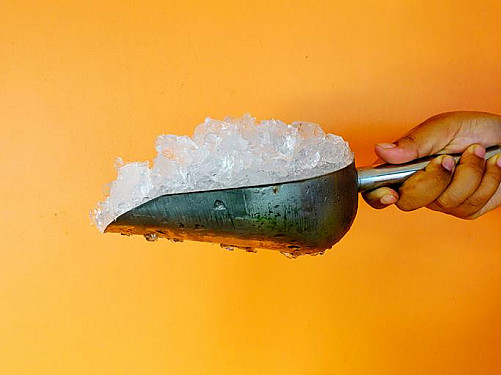
You’re huffing and puffing and starting to sweat — and that’s just from walking across the parking lot in blistering heat and humidity. This summer has left us all struggling to stay cool.
“The last 13 months have been the hottest on record. We’re seeing increased levels of heat-related illness, and it started earlier in the season we’re used to,” says Dr. Tess Wiskel, a climate change and human health fellow at the Center for Climate, Health, and the Global Environment, and an emergency physician at Beth Israel Deaconess Medical Center.
Don’t wait until you’re overheated to figure out how to cool down. Be wary of high temperature risks throughout your day and practice ways to avoid them. Here are 14 ideas to get you started.
Cover the basics
- Become a weather expert. Use a weather app on your smartphone and pay attention to the hourly temperatures, not just daily highs and lows. Note the hottest points of the day and plan your schedule around them.
- Stay hydrated. One way the body cools down is by sweating. As moisture on the skin evaporates, it takes heat with it. That’s called evaporative heat loss. But you must replace the fluids you lose through a combination of drinks and water-rich foods. Generally, the National Academy of Medicine recommends totals of about 11 cups (88 ounces) per day for women and 15 cups (120 ounces) per day for men. If you spend a lot of time outdoors or are sweating a lot, you’ll need even more fluids.
- Seek air-conditioned environments. As much as possible, hang out in air-conditioned indoor spaces during the hottest points of the day. If you don’t have AC, go to a shopping mall, public library, movie theater, or a community cooling center.
- Use fans correctly. Another way the body cools down is by channeling blood and body heat to vessels near the skin’s surface, where heat escapes. A fan can blow that heat away from your body and keep you cool, but not if the surrounding air is hot. “In that case, wet your skin, even with a spray bottle or a wet wipe. The fan will promote evaporative heat loss,” Dr. Wiskel says.
- Take breaks. Pace yourself when doing outdoor activity. “Physical work produces its own heat at the same time you’re being heated from outside,” Dr. Wiskel says. “Be active for short periods and rest in between.”
Pack and dress for heat
- Bring cool-downs with you. Any time you leave your home, bring plenty of water. Even better: bring a handheld fan, wet wipes, and ice packs. That way you’re prepared if you get stuck outside.
- Wear loose clothing. Lightweight, loose-fitting garments allow air to get to your skin, promoting evaporative heat loss to keep you cool when you sweat.
- Try high-tech clothes. Consider wearing clothes with cooling technology (such as tops, bottoms, hats, or neck gaiters). They work in various ways. For example, a garment might be made of a special fabric that’s activated with water and stays damp for a long period, continually pulling heat from your body.
Try DIY cool downs
- Make a DIY cooling garment. Dunk a kitchen towel or cotton T-shirt in cold water, wear it on your head, neck, or torso, and then rewet the fabric as it dries. Or buy higher-tech versions made with fabrics and gels designed to stay cool longer.
- Eat or drink something cold. A cool glass of water, ice chips, or a popsicle help fight dehydration and might help lower your body’s core temperature. Just don’t ingest anything too quickly. Dr. Wiskel says it might cause gastrointestinal upset.
- Cool off with a shower or bath. Experts debate the best temperature for water to cool you down. Some maintain that cool water constricts blood vessels and sends heat back to the core, making you hot again. Others maintain that chilly water cools the blood vessels and sends cooled blood to the core. Dr. Wiskel’s take: “Immerse yourself in water that’s cooler than your body temperature. The water can be tepid. Once you’re out of the water, stand in front of a fan to promote evaporative heat loss.”
- Submerge your forearms. If you can’t take a shower or bath, try a trick used by the US Army: submerge your hands, forearms, and elbows in ice water for five minutes. This helps send cooled blood moving through blood vessels back to your core.
- Apply ice or cold packs. A water-free method to cool blood vessels involves placing ice packs in areas near large blood vessels such as the elbows, underarms, neck, or inside the legs near the groin area.
Know when to get help
If you’re not cooling down after trying numerous methods, Dr. Wiskel advises that you seek care. Call your doctor’s office or call 911 if you’re exhibiting signs of heat exhaustion, such as
- excessive sweating
- headache
- feeling faint or dizzy
- cold, clammy skin
- a fast or weak pulse
- extreme fatigue
- muscle cramps.
Pay extra attention to those symptoms, especially if you’re vulnerable to heat and aren’t able to regulate your temperature well.
“People at high risk include older adults, babies and children, those who are pregnant, people who take medications that make them less able to sweat, people who work outdoors, and people with certain health conditions, including cardiovascular disease,” Dr. Wiskel says. “And if you’re not high risk, check in on people who are.”
As a service to our readers, Harvard Health Publishing provides access to our library of archived content. Please note the date of last review or update on all articles.
No content on this site, regardless of date, should ever be used as a substitute for direct medical advice from your doctor or other qualified clinician.
